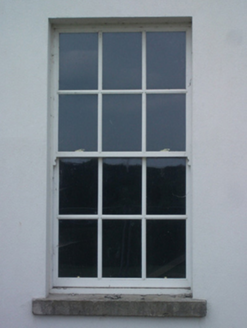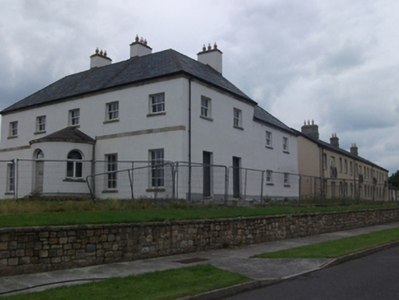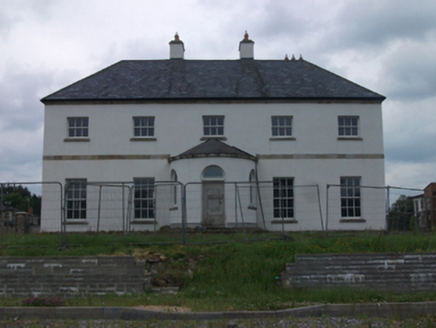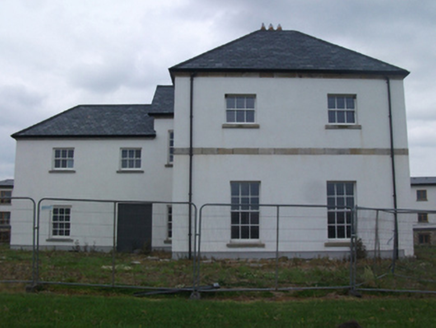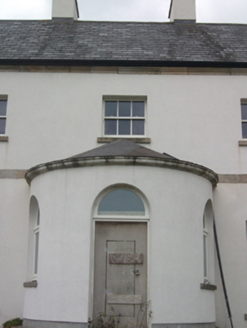Survey Data
Reg No
40304008
Rating
Regional
Categories of Special Interest
Architectural
Previous Name
Ballyconnell Castle
Original Use
Country house
Date
1760 - 1765
Coordinates
227520, 318695
Date Recorded
06/06/2012
Date Updated
--/--/--
Description
Detached five-bay two-storey country house, built 1764, having single-storey bowed entrance, added c.1850, with returns to rear extended, 2008. Currently disused. Hipped roof slate roof to main house and pitched slate roofs to returns, having rendered chimneystacks, oversailing eaves and uPVC bargeboards. Conical felt roof to bowed entrance. Rendered walls with moulded sandstone eaves course and sandstone ashlar plat band at first floor. Moulded limestone eaves cornice to entry bow. Moulded granite plinth course to north elevation. Replacement double-glazed timber six-over-six sliding sash windows to ground floor, three-over-three to first, two four-over-four to return, with limestone sills. Round-headed window openings to bow with concrete sills and casement windows. Rounded-headed door opening to entrance bay having temporary plywood door and single-pane overlight. Two square-headed door openings to ground floor of west elevation and one to east elevation of return, having metal security doors. Formerly attached L-plan multiple-bay two-storey range of former outbuildings to rear, now heavily altered and partially converted to apartments. Set on elevated site in historic demesne close to Woodford River, now within housing development. Partially surrounded by random sandstone rubble boundary wall with square cement coping and cast-iron railings.
Appraisal
Ballyconnell Castle was completed in 1620 for Walter Talbot who had developed the town during the Plantation of Ulster. The castle was burnt and replaced in the eighteenth century by Ballyconnell House, apparently built by G. Montgomery, and retained the name "castle" well into the nineteenth century. Though recently renovated, the building retains much of its historic form, proportions, and character. The detailing in local sandstone is typical of Ballyconnell. As the former seat of the landlords of Ballyconnell, it continues to contribute to the history of the town and its surrounding hinterland.
